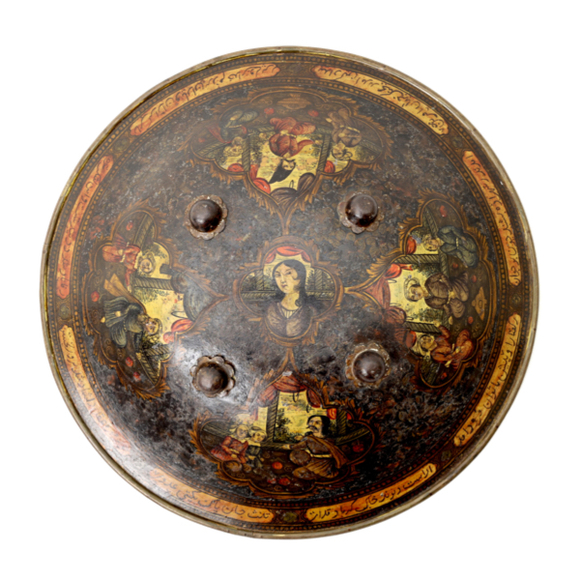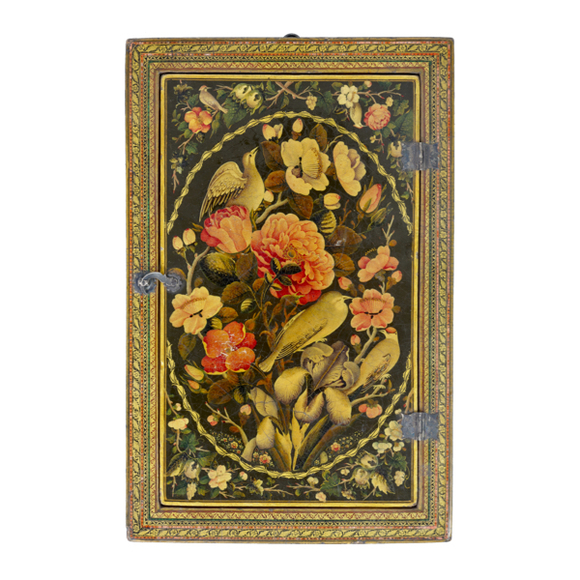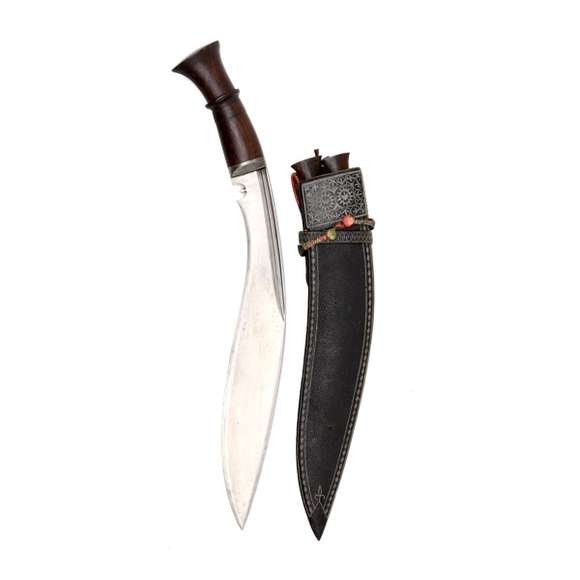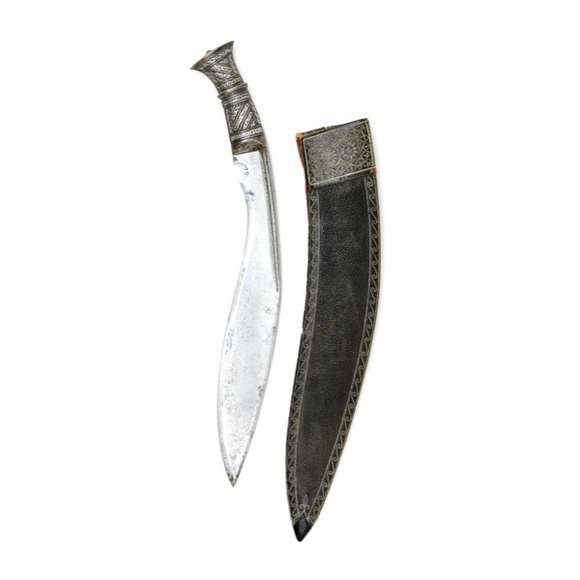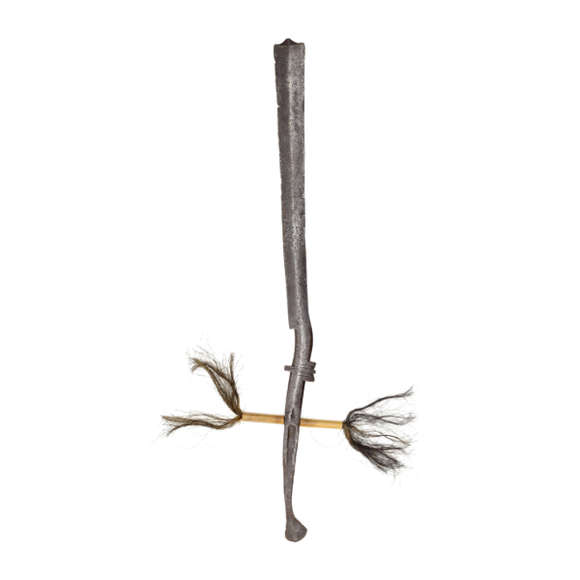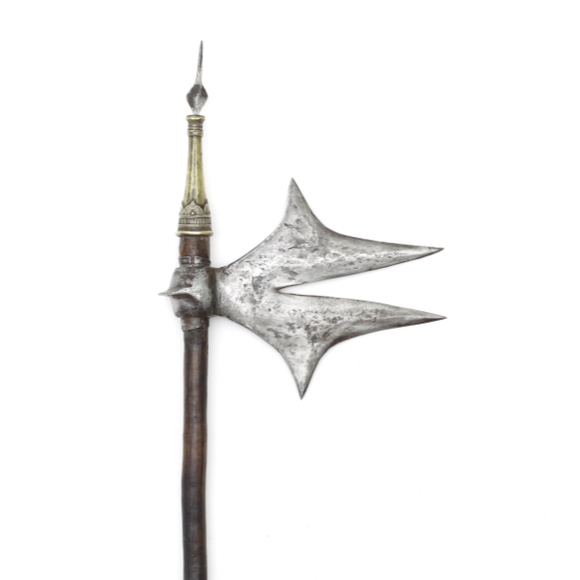Persian steel shield with fine Qajar style painted dome.

36 cm
23.7 cm
Base 5.8 mm
Middle 5.6 mm
Tip 4.7 mm
Base 45 mm
Middle 25.5 mm
Tip 5.8 mm
358 cm
1 cm into hilt
Wootz steel, agate, resin
Persia
19th century
Robert Hales
Description
A fine quality Persian khanjar. It features the classic Qajar period blade style, with a widening at the base, relatively narrow blade and thickened point. Both sides of the forte are engraved with a hunting animal, probably a lion, with its prey, probably an antelope. On one side, the scene is witnessed by two birds. Two gazelle gaze upon the spectacle on the other side. The eyes of each animal was inlaid with gold, with some losses.
The blade has two well-defined, deep grooves with a crisp ridge between them. It is forged from a high-contrast wootz with the bold pattern that the Persian steel from Isfahan and Khorasan was known for. This material was prized far and wide, and was exported to be used on some of the best Indian and Ottoman weapons of their day.
The hilt is of the typical style for these, but unusually, it is constructed out of a large piece of fine agate.
I bought it directly from Robert Hales, the most important dealer of Oriental arms of the 20th century.
Near mint condition, no scabbard.
Comparable examples
There are very few stone-hilted khanjar of this type, and I have found none with agate hilts.
The closest comparable is an example with a grey jade handle, in the Military Museum of Tehran. Published in Manouchehr Moshtagh Khorasani; Arms and Armor from Iran. Legat Verlag GmbH, Tübingen, 2006. Pages 601.













Made of pasteboard, finely lacquered with roses and nightengales.
An understated, elegant khukuri of substantial proportions with fine layered blade.
With iron, silver overlaid hilt. Its associated scabbard features fine quillwork.
This peculiar sword was used by the Garo people of Assam for fighting, clearing the jungle, and animal…

